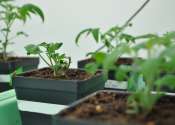RNA breakthrough creates crops that can grow 50% more potatoes, rice
Manipulating RNA can allow plants to yield dramatically more crops, as well as increasing drought tolerance, announced a group of scientists from the University of Chicago, Peking University and Guizhou University.









